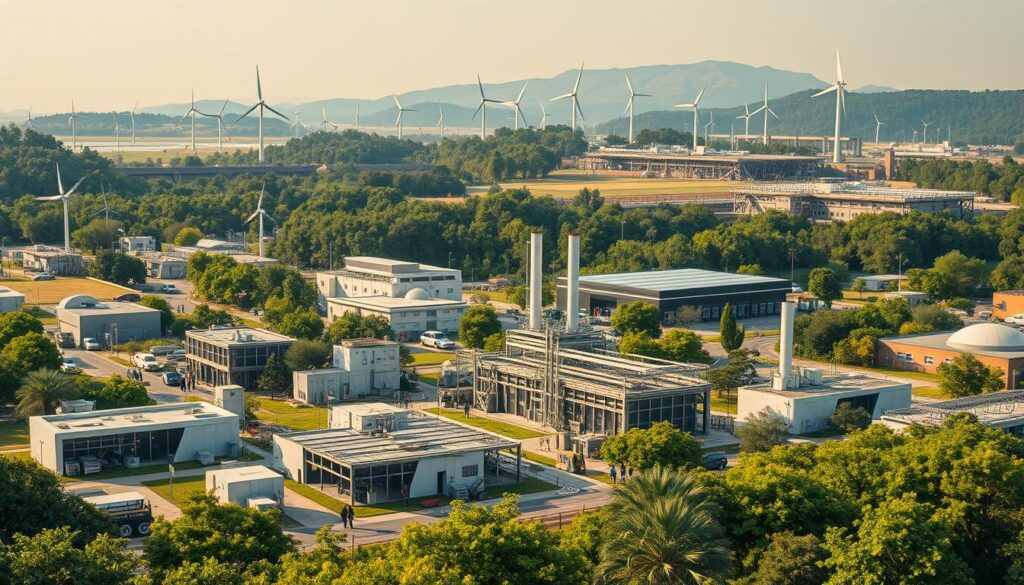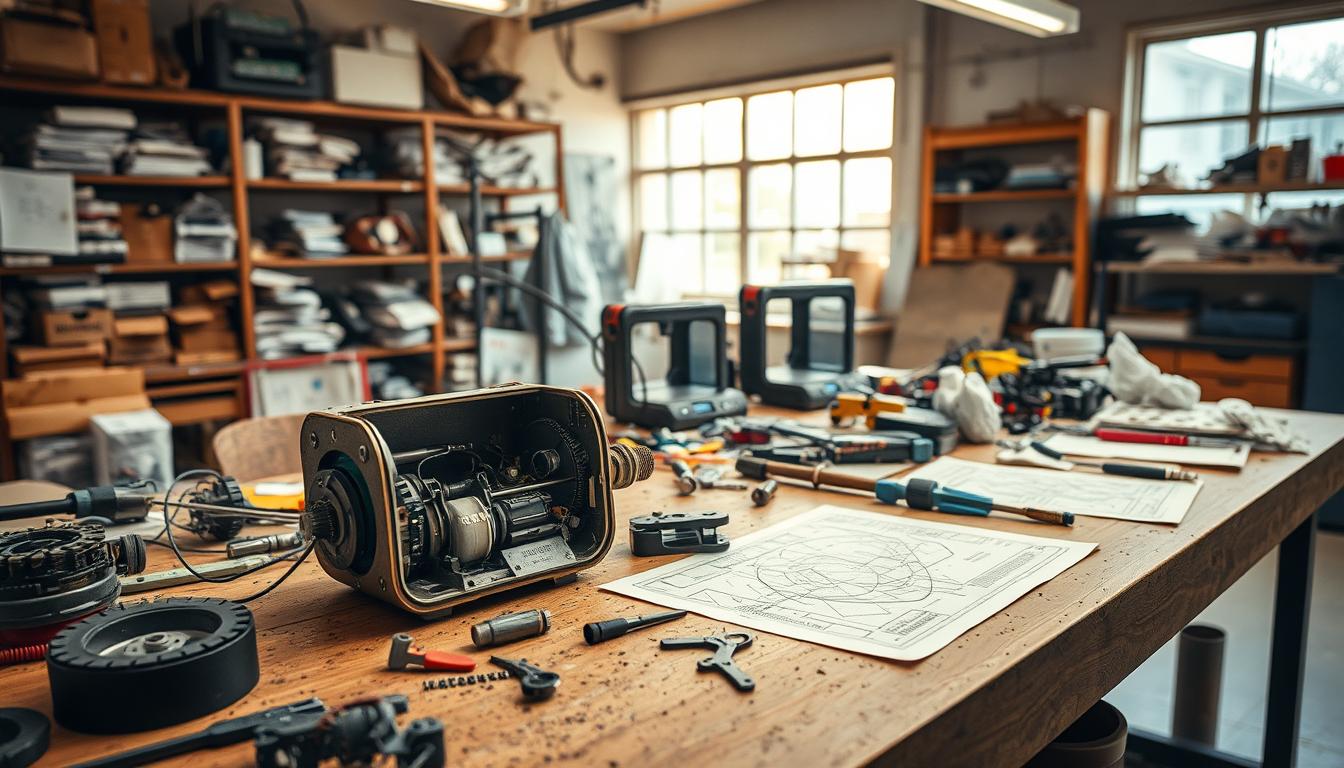As we look to make our planet greener, the journey of one engineer stands out. We found that reverse engineering could breathe new life into old machines, home appliances or consumer products. This method not only made the products last longer but also opened doors to recycle and create new products from old materials. With a need to decrease waste and keep things in use longer, reverse engineering becomes key.
This piece will explore how reverse engineering can play a big part in keeping engineering and manufacturing sustainable.
Reverse engineering is not necessary copying and infringing someone-else intellectual property (or at least regulation should move into that direction).
Key Takeaways
- Reverse engineering optimizes maintenance strategies for aging machinery and un-maintained products.
- It facilitates recycling processes, making waste reduction more efficient.
- Upcycling opportunities arise through the analysis of materials and old product designs.
- Reverse engineering supports sustainable solutions across product lifecycles.
- This approach can play a significant role in enhancing product longevity.
Reverse engineering is about taking apart a product to see how it works. This includes taking it apart, looking at each piece, and writing down what you find. The main goal is usually to make the product better or to come up with new ideas or to reproduce an obsolete part.
In areas from old electronics to retired cars, reverse engineering helps make products work better. By studying and tweaking designs, companies can keep their products up-to-date. This helps avoid having to stop using old products too soon. Through careful study, engineers can find ways to reuse and redesign, reducing waste.
Reverse Engineering in Product Lifecycle Management
“Reverse engineering is critical in managing a product’s lifespan, even if, or especially if, not intended so by original manufacturer.”
Assessing current products permits to spot improvement areas. This allows for better design and more efficient production, improving the product’s overall functionality and longevity. It also leads to better maintenance strategies. By understanding a product’s details, other companies can maintain it better, increases the product’s life and satisfies initial or secondary product owners.
This approach helps companies follow environmental rules. It promotes the use of sustainable solutions in design. Products then become easier to recycle or upcycle, meeting both legal and consumer eco-friendly expectations.

Reverse Engineering for Maintenance, Recycle and Upcycle
Reverse engineering makes products last longer and waste less. It allows businesses to look at existing products and find what can be better. This way, they can see what parts need fixing or can be made better, leading to better maintenance.
- enhancing product lifespans: organizations use reverse engineering to deeply understand their products. This helps in making smart improvements. By finding and fixing weak spots, products become more durable. This not only saves money but also helps the environment by reducing the need for new products.
- reducing waste through effective maintenance: using reverse engineering for maintenance helps cut down on waste. It lets companies fix parts before they break fully. This keeps more products usable and lessens waste. It matches well with efforts to recycle more and use resources wisely, making operations more efficient.
(indeed, buying a new east-made cheap motor would have spared him 2 hours of work)
- sustainable practices enabled by reverse engineering: by studying old or competitor products, companies can create designs that last longer and use fewer resources. It helps find green solutions, making products that help the environment longer. This method helps create eco-friendly materials and ways to make things that save energy. These ideas often come from re-thinking how we’ve made stuff in the past.

Implementing Repair and Reuse Strategies
Making products that last is key to sustainability. By focusing on how long they last and how easy they are to fix, companies meet customer needs and shrink their environmental impact. It’s important to pick out essential parts for repair early in the design stage. This makes fixing and making products last longer easier. Such forward-thinking boosts new ways to fix things and extends product life.
- Identifying key components for repair: finding which parts wear out or break easily is a big part of repair plans. Companies should use materials and parts that are easy to fix or switch out. Designing with these important parts in mind helps build a habit of taking care of what we own. This way, people keep their stuff longer, saving resources and focusing on being green. Tip: refer to many posts of this blog for many techniques and processes for design for reliability and maintenance.
- Designing for disassembly: making products easy to take apart is essential for fixing and recycling. They should be made so you can get to important parts easily, without breaking anything else. By designing with disassembly and reuse in mind, engineers make products simpler to maintain and recycle. This approach cuts down waste, supporting sustainable goals and a circular economy. Tip: refer to many posts of this blog for many design tips for design for disassembly.
- Support circular economy initiatives: reverse engineering helps the circular economy by making use of resources better and finds raw materials to reuse or recycle. This cuts down on waste. Keeping resources in use for as long as possible is a major goal of the circular economy.

Upcycling Techniques Through Reverse Engineering
Upcycling techniques use reverse engineering to turn waste into valuable products. This method lessens environmental harm and creates new value. By studying how rejected materials were originally made and used, we can find creative ways to make them better and more beautiful.
Creating value from waste: seeing the hidden worth in things usually thrown away leads to new, imaginative creations. This process can change old furniture into redesigned pieces or turn fabric scraps into stylish accessories.
Examples of Upcycled Products
- Furniture: old pallets converted into stylish coffee tables or benches.
- Fashion: jeans turned into trendy bags or aprons, showing how fabrics can be reused.
- Home ddecor: glass bottles made into decorative lamps or vases, revealing innovation in lighting designs.
- Automotive parts: car tires repurposed as outdoor planters, aiding in eco-friendly gardening.

Challenges in Applying Reverse Engineering for Sustainability
Using reverse engineering to help the planet faces tough challenges. Cost is a big one. Companies often find the initial expenses hard to handle. This can stop them from buying the tech needed for going green. Since these investments don’t pay off right away, people hesitate to make the leap.
Technology is another roadblock. Many older systems can’t handle today’s complex recycling needs. This makes it hard to reuse or recycle materials well, adding to waste. Without the latest automatic material analysis tools, figuring out if...
You have read 69% of the article. The rest is for our community. Already a member? Log in
(and also to protect our original content from scraping bots)
Innovation.world community
Login or Register (100% free)
View the rest of this article and all members-only content and tools.
Only real engineers, manufacturers, designers, marketers professionals.
No bot, no hater, no spammer.



























Related Posts
Workstation Ergonomic Assessment
Engineering Change Order (ECO): Best Practices to Minimize Disruption and Cost
From Lab To Market: The Role of the Pilot Production Run
45+ More Cognitive Science Tricks for Games and Marketing: Psychological and Engagement
45+ Cognitive Science Tricks for Games and Marketing: Psychological and Engagement
Latest Publications & Patents on Zeolites